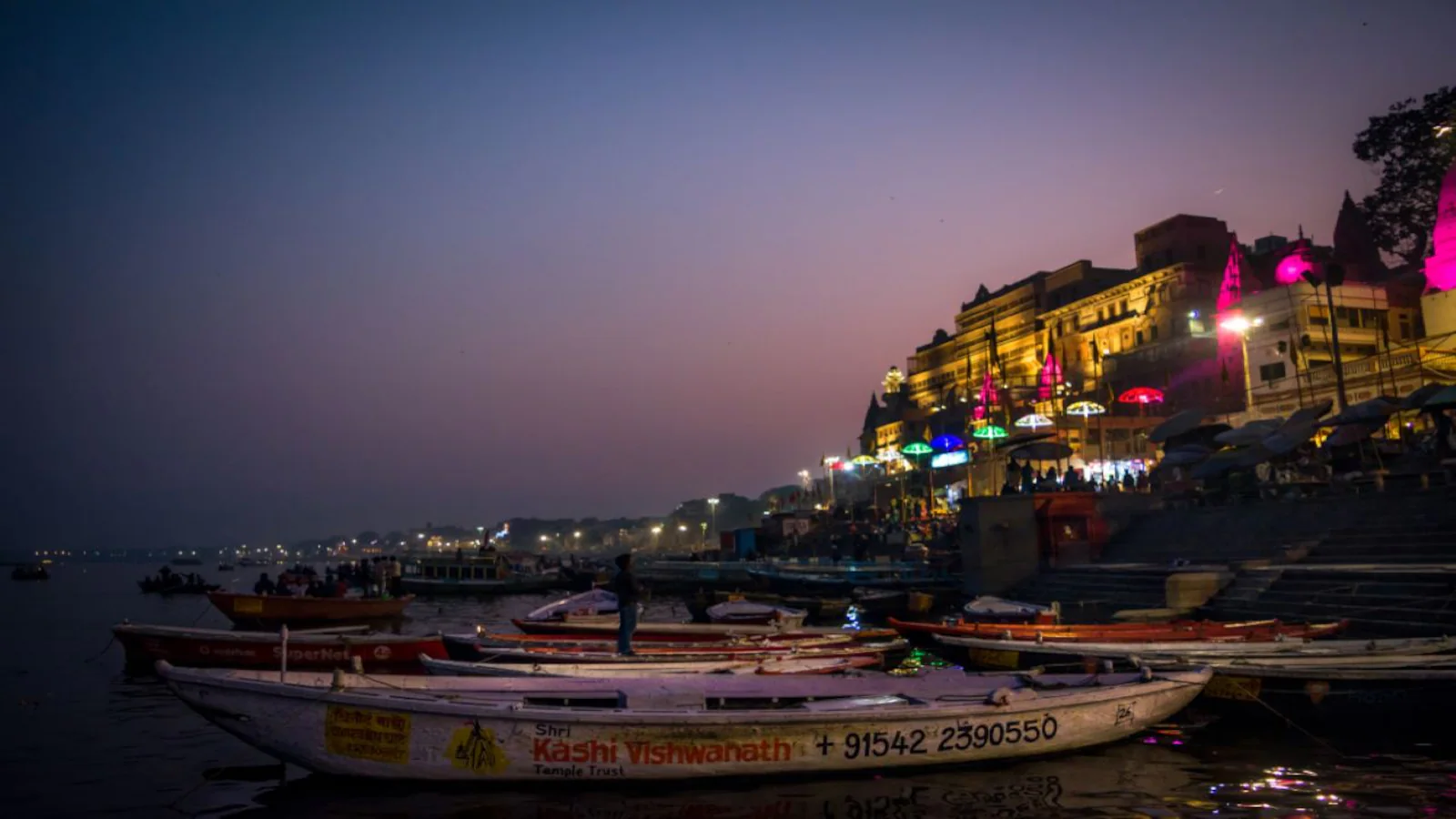Sacred Side of Varanasi
Nestled on the banks of the sacred River Ganges, Varanasi—also known as Kashi or Banaras—is not just a city; it is a timeless spiritual experience. Revered as one of the oldest living cities in the world, Varanasi is considered the spiritual capital of India, where faith, rituals, and divine energy intertwine to awaken the soul.
For seekers of inner peace and truth, Varanasi offers more than temples and rituals—it offers a path to spiritual awakening. Whether you’re a pilgrim, meditator, or simply curious about India’s spiritual heart, exploring Varanasi’s sacred side can be a transformative journey.

Sacred Side of Varanasi
1. Sunrise at the Ghats: A Divine Beginning
Start your spiritual journey with a sunrise boat ride on the Ganges. As the first rays of the sun kiss the waters and priests chant mantras, the city comes alive with spiritual energy. The experience is meditative, poetic, and deeply moving.
Must-Visit Ghats:
- Dashashwamedh Ghat – Known for its vibrant morning and evening aartis.
- Assi Ghat – A quieter, more introspective space, popular among meditators.
- Panchganga Ghat – Believed to be the confluence of five sacred rivers.
2. Kashi Vishwanath Temple: The Spiritual Epicenter
The Kashi Vishwanath Temple, dedicated to Lord Shiva, is one of the twelve Jyotirlingas in India. Devotees believe that a visit here ensures liberation from the cycle of birth and death (moksha). Despite the crowd and chaos, the temple exudes an unshakable calmness.
Spiritual Insight: According to legend, Lord Shiva himself resides in Varanasi. Visiting Kashi Vishwanath is believed to bring instant spiritual upliftment.
3. Meditation & Yoga: Reconnecting with the Inner Self
Varanasi is a sanctuary for yoga and meditation enthusiasts. Numerous ashrams and centers along the ghats offer classes, retreats, and satsangs (spiritual discourses).
Recommended Retreats:
- Sarnath Vipassana Centre – For silent meditation retreats.
- International Yoga Community at Assi Ghat – Offers drop-in sessions and long-term programs.
- Kaivalya Yoga School – Traditional Hatha Yoga and teacher training.
4. Evening Ganga Aarti: A Visual and Spiritual Spectacle
Every evening, the Ganges glows with the golden light of the Ganga Aarti at Dashashwamedh Ghat. Priests perform synchronized rituals with fire, incense, and conch shells, accompanied by rhythmic chants. The energy is electrifying and sacred.
Pro Tip: Arrive early to grab a good spot or watch from a boat for a panoramic view.
5. Visiting Sacred Temples & Ashrams
Apart from Kashi Vishwanath, Varanasi is dotted with hundreds of temples, each with a story and spiritual significance.
Notable Sacred Spots:
- Annapurna Devi Temple – Goddess of nourishment and abundance.
- Sankat Mochan Hanuman Temple – Believed to remove obstacles and evil forces.
- Durga Kund Temple – A powerful Shakti temple beside a sacred pond.
- Ashrams of Swami Avimukteshwaranand and Shankaracharya – Centers of Vedantic teachings and spiritual debate.
6. Sarnath: The Roots of Buddhist Enlightenment
Just 10 km from Varanasi lies Sarnath, where Lord Buddha delivered his first sermon after attaining enlightenment. The peaceful gardens, Dhamek Stupa, and meditation centers offer a profound contrast to Varanasi’s vibrant chaos.
Spiritual Lesson: Sarnath reminds us of the importance of balance—between wisdom and compassion, silence and speech, solitude and society.
7. Learning from Saints, Sadhus & Gurus
In Varanasi, you’ll encounter wandering sadhus, spiritual teachers, and philosophers who have renounced worldly pleasures. Conversations with them can lead to deep insights about life, karma, and the soul.
Many of them are open to sharing their stories and philosophies if approached respectfully.
8. Sattvic Food: Nourishing the Body & Soul
Spiritual awakening isn’t complete without purifying the body. Try sattvic food—pure, vegetarian meals prepared with spiritual mindfulness.
- Kachori-Sabzi at Kachori Gali
- Malaiyo (a winter delicacy)
- Banarasi thali at local bhojanalayas
- Tulsi tea and ashram-cooked meals
9. Pilgrimage Practices: Parikramas & Ritual Baths
Performing a ritual bath in the Ganges is said to cleanse one’s sins. Many devotees also undertake Kashi Parikrama, a spiritual walk around the city’s sacred sites.
Participation in these rituals—whether actively or as a silent observer—invites introspection and humility.
10. Capturing the Sacred Moments
Photography in Varanasi can be a spiritual act in itself. Whether it’s capturing the expression of a meditating sadhu, the glow of an aarti flame, or the serenity of a temple, each frame tells a divine story.
Always ask for permission when photographing people, especially in sacred areas.
Conclusion: Varanasi, A Gateway to the Divine
In Varanasi, the physical and spiritual realms coexist seamlessly. It is a city that embraces death not as an end, but as a transition into eternity. The sacred river, ancient chants, and divine energy all come together to awaken the soul and reconnect you with the essence of existence.
Whether you’re seeking peace, purpose, or enlightenment, Varanasi welcomes you with open arms and an ancient soul.




